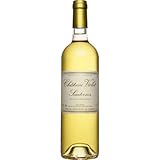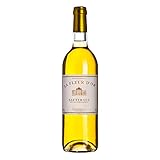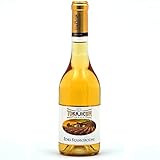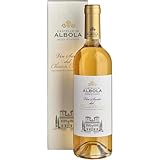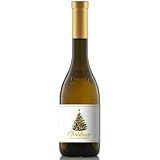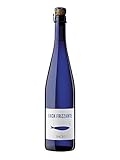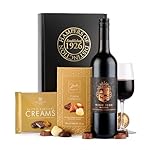What’s in this Guide?
- Introduction to Dessert Wines
- Best Selling Dessert Wine
- Types of Dessert Wines
- Popular Dessert Wine Regions
- What does Dessert wine taste like?
- How to do a Dessert wine tasting at home?
- Pairing Dessert Wine with Food
- Health Benefits of Drinking Dessert Wine
- How to Properly Store and Serve Dessert Wine
- Popular & Budget-Friendly Dessert Wines in the UK
- Our Key Takeaways on Dessert Wine
- Best Selling Dessert Wine

Introduction to Dessert Wines
Indulge your senses in the world of Dessert Wines, where sweet nectar meets refined elegance. In the realm of wine, there is no sweeter pleasure than savouring a glass of dessert wine after a delicious meal or as a standalone treat. From the rich and velvety Ports to the luscious Sauternes, these wines are made to delight and captivate.
In this complete guide to Dessert Wines, we will explore the captivating varieties that grace our glasses and tantalise our taste buds. We’ll take you on a journey through renowned regions, uncovering their unique characteristics and flavours. Whether you’re new to dessert wines or consider yourself an aficionado, this guide will provide invaluable insights into selecting, tasting, pairing, storing and serving these delectable libations.
So get ready for an exploration of sweetness that will leave you yearning for more! Let’s dive into the enchanting world of Dessert Wines together!
Best Selling Dessert Wine
Types of Dessert Wines
When it comes to dessert wines, there is a wide variety of options to choose from. Let’s take a closer look at some of the most popular types:
- Port: This fortified wine hails from Portugal and is known for its rich and sweet flavour profile. It pairs perfectly with chocolate desserts or can be enjoyed on its own as a digestif.
# Preview Product Price 1 Cockburn's Special Reserve Port Wine, 75cl £11.23 Buy on Amazon 2 Taylors Late Bottled Vintage Port | 75 cl £14.00 Buy on Amazon - Sauternes: Produced in the Bordeaux region of France, Sauternes is made from botrytised grapes, which gives it a unique honeyed taste. It pairs wonderfully with foie gras or blue cheese.
# Preview Product Price 1 Chateau Violet Sauternes 2019 37.5cl 13.5% ABV £19.95 Buy on Amazon 2 Chateau Violet Sauternes 2019 37.5cl 13.5% ABV £17.95 Buy on Amazon - Ice Wine/Eiswein: Harvested in freezing temperatures, ice wines are renowned for their intense sweetness and concentrated flavours. Canada and Germany are known for producing exceptional ice wines.
# Preview Product Price 1 ICE WINE PURCARI (375ml) in present box £34.99 Buy on Amazon 2 Seifried Estate Sweet Agnes Riesling Dessert Wine 37.5cl £16.18 Buy on Amazon - Tokaji: Originating from Hungary, Tokaji is famous for its luscious sweetness balanced by high acidity. This wine goes well with fruit-based desserts or creamy cheeses.
# Preview Product Price 1 TOKAJICUM Tokaji Aszú 5 Puttonyos 0.5l - Award Winner Sweet Wine £25.00 Buy on Amazon 2 Tokajicum Tokaji Szamorodni 0.5l - Sweet Dessert Wine £17.40 Buy on Amazon - Vin Santo: Coming from Italy’s Tuscany region, Vin Santo is made using dried grapes that produce a complex nutty flavour profile with hints of caramel and raisins.
# Preview Product Price 1 Ruffino Serelle Vin Santo del Chianti, Italy, 375ml £21.00 Buy on Amazon 2 Castello di Albola Vin Santo del Chianti DOCG - Dessert White Wine from Tuscany, Italy - Malvasia... £31.63 Buy on Amazon - Late Harvest Wines: These wines are made from grapes left on the vine longer than usual to increase sugar concentration naturally. They offer an array of flavours ranging from tropical fruits to honeycomb notes.
# Preview Product Price 1 Royal Tokaji Late Harvest £16.50 Buy on Amazon 2 Nederburg Winemasters Noble Late Harvest, 37.5cl £13.84 Buy on Amazon - Pedro Ximénez (PX): From Spain’s Sherry region, PX offers a dark syrupy texture with intense flavours of figs, dates, and molasses making it an excellent choice to pair with rich chocolate desserts.
# Preview Product Price 1 Gonzalez Byass Nectar Pedro Ximenez Sherry, 75cl £19.95 Buy on Amazon 2 Lustau San Emilio Pedro Ximenez Sherry, 75 cl £22.95 Buy on Amazon - Muscat/Moscato: Moscatel de Setubal, Moscatel de Alejandria & Moscato d’Asti all have aromatic profiles characterised by floral notes such as rose petals, sage, violets along side fresh fruits like peaches, citrus zest making them great choices not only for desserts but also as an aperitif.
Dessert wines offer a wide array of flavours and styles to cater to different palates and complement all types of desserts. From sweet and syrupy to crisp and refreshing, there is a perfect dessert wine for every occasion.
Popular Dessert Wine Regions
When it comes to dessert wines, there are several popular regions around the world that produce exceptional varieties. Let’s explore some of these key wine regions and discover what makes them unique.
- Portugal – Port wine is synonymous with the Douro Valley in Portugal. This fortified wine is rich, sweet, and often enjoyed as an after-dinner treat. The region’s steep terraced vineyards add a distinctive character to the wines, which can be aged for decades.
# Preview Product Price 1 Laithwaites Portuguese Red Wine Mix - Case of 6 Mixed Bottles Selection (75cl) £70.00 Buy on Amazon 2 Porta 6 Vinho Regional Lisboa Red Wine, 75cl Buy on Amazon - France – Sauternes, hailing from Bordeaux in France, is renowned for its lusciously sweet white wines. These golden nectars are made from grapes affected by noble rot, resulting in concentrated flavours of honeyed apricots and caramelised citrus.
- Germany – Eiswein or Ice Wine is a specialty of Germany where grapes freeze on the vines and are harvested at freezing temperatures. This labour-intensive process produces intensely sweet wines with vibrant acidity that perfectly balance their honeyed notes.
# Preview Product Price 1 The Concise Atlas of German Wines £3.50 Buy on Amazon 2 German Wines £3.00 Buy on Amazon - Hungary – Tokaji Aszú wines come from the Tokaj region of Hungary and have a long history dating back centuries. Made from botrytis-affected Furmint grapes, these dessert wines offer complex flavours of dried fruits, orange peel, and honeycomb.
# Preview Product Price 1 BOLYKI Egri Bikavér 'Bull's Blood' 0.75l - Decanter Winner Hungarian Red Wine £20.90 Buy on Amazon 2 Bull's Blood 'Budapest' 2020 0.75l - Hungarian Bikavér Red Wine in Gift Wrap £19.90 Buy on Amazon - Italy – Vin Santo means “holy wine” in Italian and originates from Tuscany where it has been produced since medieval times using dried Trebbiano or Malvasia grapes to create richly flavoured amber-coloured dessert wines.
# Preview Product Price 1 Italian Wines 2025 £21.13 Buy on Amazon 2 Novantaceppi Montepulciano D'Abruzzo DOC - Italian Red Wine £12.00 Buy on Amazon - United States & Canada: Late Harvest Wines originating primarily from California (US) and British Columbia (Canada) are made by allowing grapes to hang on vines longer than usual to develop higher sugar levels before harvests begin; producing highly aromatic late-harvested dessert-style white or red varietals.
Each region mentioned above brings something unique to desserts wines through distinct grape varieties or production techniques resulting in diverse flavour profiles that can range from honeyed and tropical to rich and velvety. Exploring these regions is a delightful journey for any dessert wine lover.
What does Dessert wine taste like?
What does Dessert wine taste like? The taste of dessert wine can vary depending on the type and region, but there are some common tasting notes that you can expect. One key characteristic of dessert wines is their sweetness. These wines are usually sweeter than regular table wines, with a higher residual sugar content.
Dessert wines often have intense flavours that can range from fruity to nutty to floral. For example, Port wine is known for its rich and velvety texture, with flavours of dark berries, chocolate, and sometimes even hints of caramel or spice.
Sauternes, on the other hand, is famous for its luscious honeyed aromas and flavours of apricot, peach, and tropical fruits. It has a perfect balance between sweetness and acidity. Ice Wine or Eiswein has a distinct flavour profile as well. Made from grapes that have been frozen on the vine before harvesting, it has concentrated flavours of ripe fruit such as apples and pears. It also possesses a refreshing acidity that offsets the sweetness. Tokaji from Hungary offers complex notes of dried apricots, honeycomb, orange peel along with vibrant acidity which makes it an ideal pairing for desserts. Vin Santo from Italy exhibits nutty aromas combined with dried fruit flavours like raisins and figs followed by a long finish. Late Harvest Wines showcase ripe fruit characteristics like peaches or pineapple while maintaining balanced sweetness levels due to late picking. Pedro Ximénez (PX) brings deep caramelised flavours mixed with raisins in every sip while Muscat/Moscato presents aromatic profiles reminiscent of floral bouquets or tropical fruits. Riesling Icewine surprises your palate with an explosion of sweet citrusy flavours coupled with bracing acidity giving it unparalleled balance.
These are just a few examples; each dessert wine offers its own unique tasting experience. So if you enjoy exploring different flavour profiles and indulging in sweetness, dessert wines are definitely worth a try.
How to do a Dessert wine tasting at home?
If you’re a wine lover looking to expand your tasting horizons, why not try hosting a dessert wine tasting at home? It’s a fun and indulgent way to explore the world of sweet wines without leaving the comfort of your own living room. Here are some tips on how to make it an enjoyable experience.
First, gather a selection of dessert wines from different regions and grape varieties. Include classics like Port, Sauternes, Ice Wine/Eiswein, Tokaji, Vin Santo, Late Harvest Wines, Pedro Ximénez (PX), Muscat/Moscato, and Riesling Icewine. This variety will allow you to compare flavours and styles.
Next, prepare your palate by cleansing it with plain water or unsalted crackers. Dessert wines can be quite sweet and rich in flavour, so having a neutral base is important for accurate taste perception.
When serving the wines, remember that they are best enjoyed chilled but not ice cold. Pour small amounts into individual glasses to avoid overwhelming your taste buds with sweetness.
Take time to observe each wine’s appearance – its colour and viscosity can provide clues about its age and style. Swirl the glass gently before taking a sniff – this will help release aromas that add complexity to the tasting experience.
As you take your first sip, hold the wine in your mouth for a few seconds to fully appreciate its flavours and textures. Note the level of sweetness, acidity, and alcohol content. Is it light-bodied or full-bodied? Is it syrupy or refreshing? Does it have any noticeable tannins?
After you’ve tasted each wine individually, try pairing them with different desserts. The classic pairings are dark chocolate with Port, fruit tart with Sauternes, and cheesecake with Muscat/Moscato. However, feel free to experiment and find your own favourite combinations.
Discuss your thoughts and opinions on each wine with your guests. This is where the fun part comes in – everyone’s taste buds are unique and it’s interesting to hear different perspectives on the same wines.
To enhance the tasting experience, you can also include some food items that complement dessert wines such as aged cheeses, dried fruits, nuts, or even foie gras.
Lastly, don’t forget to take notes! Writing down your impressions of each wine will help you remember them for future reference and make it easier to compare them later on.
Hosting a dessert wine tasting at home is not only a delicious way to spend an evening but also a great opportunity to learn about different styles of sweet wines. So
Pairing Dessert Wine with Food
When it comes to dessert wines, the possibilities for food pairings are endless. The rich and decadent flavours of these wines can complement a variety of sweet treats and savoury dishes alike. Here are some common food pairings to enhance your dessert wine experience.
- Port: This fortified wine pairs beautifully with blue cheese or dark chocolate desserts. The sweetness of the port balances out the saltiness of the cheese or bitterness of the chocolate, creating a harmonious combination.
- Sauternes: This lusciously sweet French wine is perfect when paired with foie gras or creamy desserts like crème brûlée. The richness of the Sauternes complements the buttery textures and enhances their flavours.
- Ice Wine/Eiswein: Known for its intense sweetness, ice wine is delightful when enjoyed alongside fruit-based desserts such as apple pie or peach cobbler. The vibrant acidity in ice wine cuts through the sweetness and adds a refreshing element to each bite.
- Tokaji: Hailing from Hungary, Tokaji has an incredible depth of flavour that pairs wonderfully with strong cheeses like Roquefort or Stilton. These bold combinations create a symphony on your palate – salty, creamy, and sweet all at once.
- Vin Santo: A traditional Italian dessert wine that finds its match in biscotti or almond-based pastries like cantucci di Prato. The nutty undertones in Vin Santo bring out new dimensions in these delicacies.
- Late Harvest Wines: The caramelised notes found in late harvest wines make them an ideal partner for crème caramel or sticky toffee pudding. These warm desserts find balance next to this indulgent nectar-like elixir.
- Pedro Ximénez (PX): This Spanish sherry is heavenly when served alongside vanilla ice cream drizzled with PX syrup. The velvety texture and intense sweetness create a truly indulgent dessert experience.
- Moscato d’Asti: This Italian sparkling dessert wine is perfect for pairing with fresh fruit, such as strawberries or peaches. The light and fruity flavours of the wine enhance the sweetness of the fruit, making for a refreshing and delightful combination.
- Banyuls: A fortified red wine from France, Banyuls pairs well with dark chocolate desserts or rich, nutty dishes like pecan pie. The bold flavours of the wine stand up to the richness of these desserts and complement their flavours.
- Brachetto d’Acqui: Another sparkling dessert wine from Italy, Brachetto d’Acqui is a great match for fruity desserts like berry tarts or sorbets. Its light and bubbly nature adds a fun element to any sweet treat.
When it comes to pairing dessert wines with food, there are no strict rules – it all comes down to personal preference. However, these common pairings can serve as a guide to help you find your perfect combination. So go ahead and indulge in some delicious dessert wines with your favourite treats!
Best Selling Dessert Wine Hampers
Health Benefits of Drinking Dessert Wine
- Antioxidant properties: Dessert wines, especially those made from grapes like Muscat and Riesling, are packed with antioxidants. These compounds help to neutralise harmful free radicals in the body and may contribute to reducing the risk of chronic diseases.
- Heart health: Moderate consumption of dessert wine has been associated with improved heart health. The presence of resveratrol, a natural compound found in grape skins, helps promote healthy blood circulation and may reduce the risk of cardiovascular problems.
- Digestive aid: Many dessert wines have higher levels of acidity which can stimulate digestion and enhance nutrient absorption. Enjoying a small glass after a meal can help ease digestion and alleviate discomfort.
- Stress relief: Indulging in a sweet treat like dessert wine can provide a momentary escape from daily stressors. Sipping on a luscious Port or Vin Santo at the end of a long day can be quite relaxing.
- Social bonding: Sharing good-quality dessert wine with friends or loved ones is an excellent way to create lasting memories while fostering social connections.
Remember, moderation is key when it comes to enjoying any alcoholic beverage for its potential health benefits. Always consult your healthcare professional before making changes to your diet or lifestyle.
How to Properly Store and Serve Dessert Wine
Properly storing and serving dessert wine is essential to ensure that you get the best flavours and aromas from your bottle. Here are some tips on how to do it right:
- Temperature Control: Dessert wines should be stored at a cool, stable temperature of around 12-14°C (54-57°F). Avoid fluctuations in temperature, as they can affect the quality of the wine.
- Horizontal Storage: Store your dessert wines horizontally to keep the cork moist and prevent oxidation. This is especially important for older vintages.
- Darkness is Key: Keep your dessert wines away from direct sunlight or bright artificial light, as UV rays can degrade the wine’s flavour over time.
- Serve Chilled: Most dessert wines taste best when served chilled, but not overly cold. Aim for a serving temperature between 7-10°C (45-50°F).
- Use Appropriate Glassware: Choose smaller glasses with a narrow rim to concentrate the aromas and enhance your tasting experience.
- Pairing Considerations: When serving dessert wine, consider pairing it with complementary foods like blue cheese, chocolate desserts, or fruit-based pastries to create an enjoyable balance of flavours.
Best Selling Wine Fridges
Remember that every bottle of dessert wine has its own unique characteristics and aging requirements, so always consult the specific recommendations provided by the winemaker or knowledgeable sommelier before storing or serving your chosen bottle.
Popular & Budget-Friendly Dessert Wines in the UK
When it comes to dessert wines, you don’t have to break the bank to enjoy a delicious bottle. The UK offers a wide range of popular and budget-friendly options that will satisfy your sweet tooth without emptying your wallet.
One such option is Muscat/Moscato, known for its aromatic and fruity flavours. This wine pairs beautifully with fruit-based desserts and is often enjoyed on its own as a refreshing treat.
Another affordable choice is Late Harvest Wines, which are made from grapes left on the vine longer to develop concentrated sugars. These wines boast rich flavours of honey and dried fruits, perfect for pairing with creamy desserts or strong cheeses.
If you’re looking for something unique, Pedro Ximénez (PX) from Spain delivers intense sweetness with notes of raisins, caramel, and coffee. Serve it chilled alongside chocolate-based desserts for an indulgent experience.
For those who prefer white dessert wines, Riesling Icewine offers a delightful balance between sweetness and acidity. Produced by harvesting frozen grapes in Germany’s icy winters, this wine showcases flavours of tropical fruits like pineapple and mango.
When it comes to budget-friendly options from Portugal, Port wine stands out. With its deep ruby colour and rich flavours of blackberry jam and dark chocolate, Port pairs exceptionally well with cheese boards or decadent chocolate desserts.
Lastly, Vin Santo from Italy provides great value for money as well. Made from dried grapes that are aged in small barrels called “caratelli,” Vin Santo boasts complex aromas of toasted nuts, honey, and dried apricots, making it an ideal companion to biscotti or almond-based sweets.
In conclusion, the UK market offers various popular dessert wines at affordable prices without compromising taste or quality.
So why not explore these budget-friendly options? Treat yourself to a glass after dinner or surprise your guests at your next gathering.
From a wide variety of flavours, there is no doubt that you will discover an affordable dessert wine that satisfies your taste and brings joy.
Popular Dessert Wines
Our Key Takeaways on Dessert Wine
In this complete guide to dessert wines, we have explored the wonderful world of these sweet and indulgent wines. Here are some key points to remember:
- Dessert wines come in a variety of styles, including Port, Sauternes, Ice Wine/Eiswein, Tokaji, Vin Santo, Late Harvest Wines, Pedro Ximénez (PX), Muscat/Moscato, and Riesling Icewine.
- Each type of dessert wine has its own unique characteristics and flavours. For example, Port is rich and full-bodied with notes of dark fruits and chocolate. On the other hand, Sauternes is lusciously sweet with flavours of honey and apricot.
- There are several popular dessert wine regions around the world where these wines are produced. Some noteworthy regions include Portugal for Port wine production; Bordeaux in France for Sauternes; Germany for Eiswein; Hungary for Tokaji; Italy for Vin Santo; California for Late Harvest Wines; Spain for Pedro Ximénez (PX); Australia for Muscat/Moscato; and Canada for Riesling Icewine.
- When tasting dessert wine, you can expect a symphony of flavours ranging from ripe fruits to honeyed sweetness. The balance between acidity and sweetness is crucial in creating a harmonious taste experience.
- Hosting a dessert wine tasting at home can be an enjoyable way to explore different varieties. Remember to serve the wines chilled but not too cold to allow their aromas and flavours to fully develop.
- Pairing dessert wine with food can elevate both elements. Some classic pairings include blue cheese with Port or foie gras with Sauternes. However, feel free to experiment with your own combinations based on personal preferences.
- In moderation, drinking dessert wine may offer health benefits such as antioxidants that help fight cell damage caused by free radicals.
Now that you have a better understanding of dessert wines, why not give them a try? Indulge in a glass of your favourite sweet wine and savour the delicious flavours it has to offer.
Best Selling Dessert Wine
As an Amazon Affiliate, we earn from any qualifying purchases / Images from Amazon Product Advertising API







